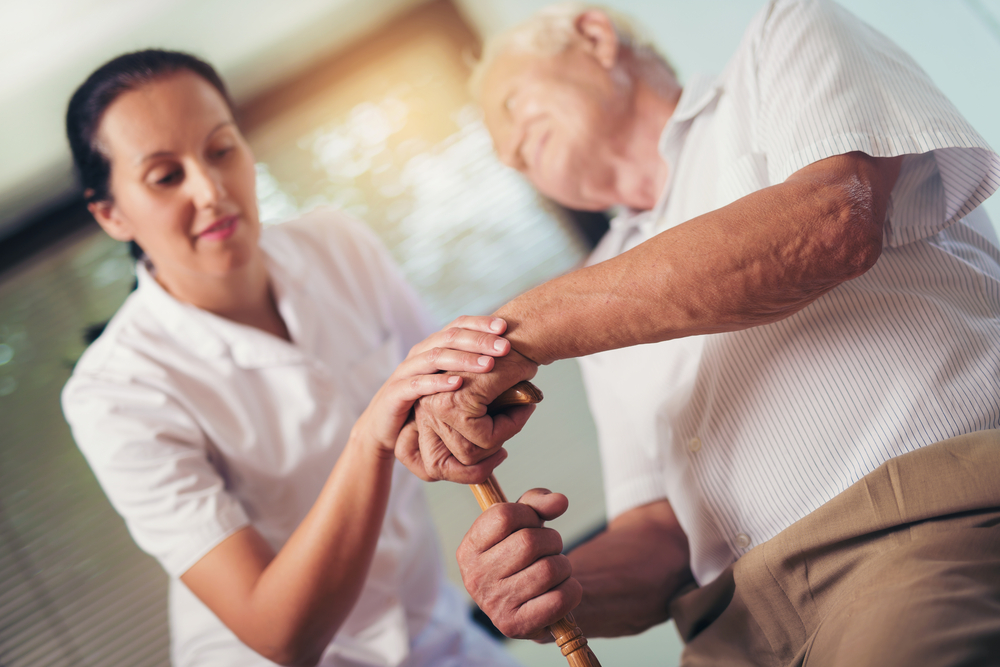Parkinson’s disease is a progressive neurological disorder that affects movement and can cause tremors, stiffness, and difficulty with balance and coordination. It is caused by the degeneration of cells in a specific area of the brain known as the substantia nigra, which produces a neurotransmitter called dopamine. This neurotransmitter helps to regulate movement in the body.
Symptoms of Parkinson’s disease typically develop gradually and may include:
- Tremors: This is the most common symptom of Parkinson’s disease, and it usually affects the hand or fingers. Tremors may be present at rest and may disappear during movement or when the person is asleep.
- Rigidity: This symptom causes the muscles to become stiff and difficult to move. It can lead to pain and discomfort, as well as difficulty with everyday activities such as getting dressed or brushing.
- Bradykinesia: This symptom refers to a slowness of movement and can make it difficult to initiate movement or to change position.
- Postural instability: This symptom can cause difficulty with balance and coordination, which can lead to falls.
- Changes in speech: People with Parkinson’s disease may experience changes in their voice, such as speaking more quietly or rapidly. They may also have difficulty swallowing or may experience drooling.
- Changes in writing: The handwriting of people with Parkinson’s disease may become small and difficult to read.
- Non-motor symptoms: Parkinson’s disease can also cause non-motor symptoms, such as depression, anxiety, and sleep disturbances.
Treatment for Parkinson’s disease typically involves medications that can help to improve symptoms and improve quality of life. These medications may include:
- Levodopa: This is the most commonly used medication for Parkinson’s disease and it helps to increase the levels of dopamine in the brain.
- Dopamine agonists: These medications help to mimic the effects of dopamine in the brain and can be used alone or in combination with levodopa.
- Monoamine oxidase type B inhibitors: These medications help to slow the breakdown of dopamine in the brain and can be used in combination with levodopa.
- Anticholinergics: These medications help to reduce tremors and may be used in combination with other medications.
In addition to medications, there are several other treatments that may be helpful for people with Parkinson’s disease. These include:
- Physical therapy: Physical therapy can help to improve mobility, balance, and coordination.
- Occupational therapy: Occupational therapy can help to improve the ability to perform everyday tasks and activities.
- Speech therapy: Speech therapy can help to improve speech and swallowing difficulties.
- Surgery: In some cases, surgery may be recommended to help improve symptoms of Parkinson’s disease. One option is deep brain stimulation, which involves the implantation of a device that delivers electrical stimulation to specific areas of the brain.
It is important for people with Parkinson’s disease to work closely with their healthcare team to determine the most appropriate treatment plan. This may involve a combination of medications and other therapies, and may need to be adjusted over time as the disease progresses.
Managing Parkinson’s disease can be challenging, but with proper treatment and support, it is possible to improve symptoms and maintain a good quality of life. It is important for people with Parkinson’s disease to stay active and engaged in their treatment and to seek support from loved ones and healthcare professionals as needed.

 Home
Home Health
Health Diet & Nutrition
Diet & Nutrition Living Well
Living Well More
More












